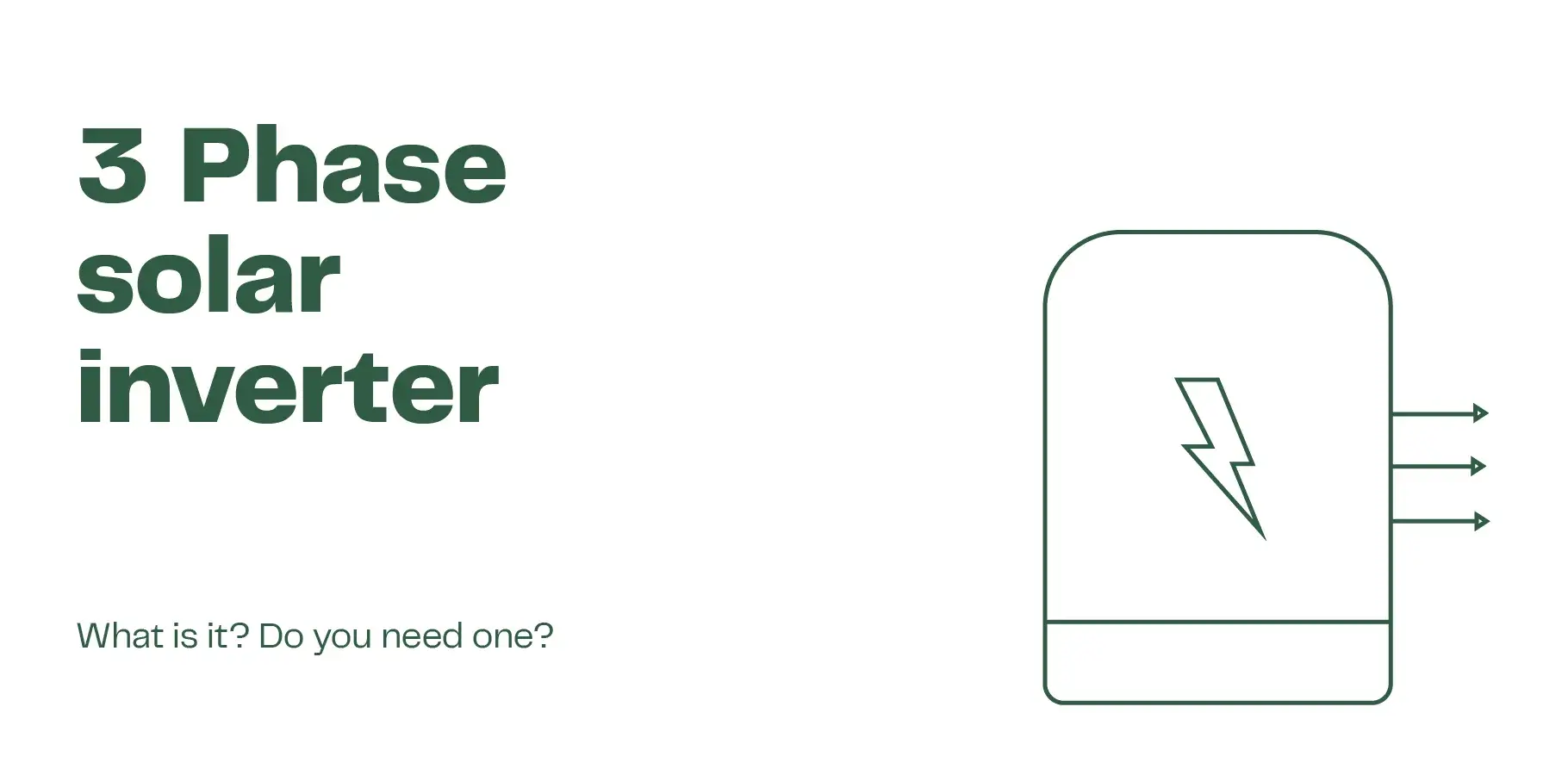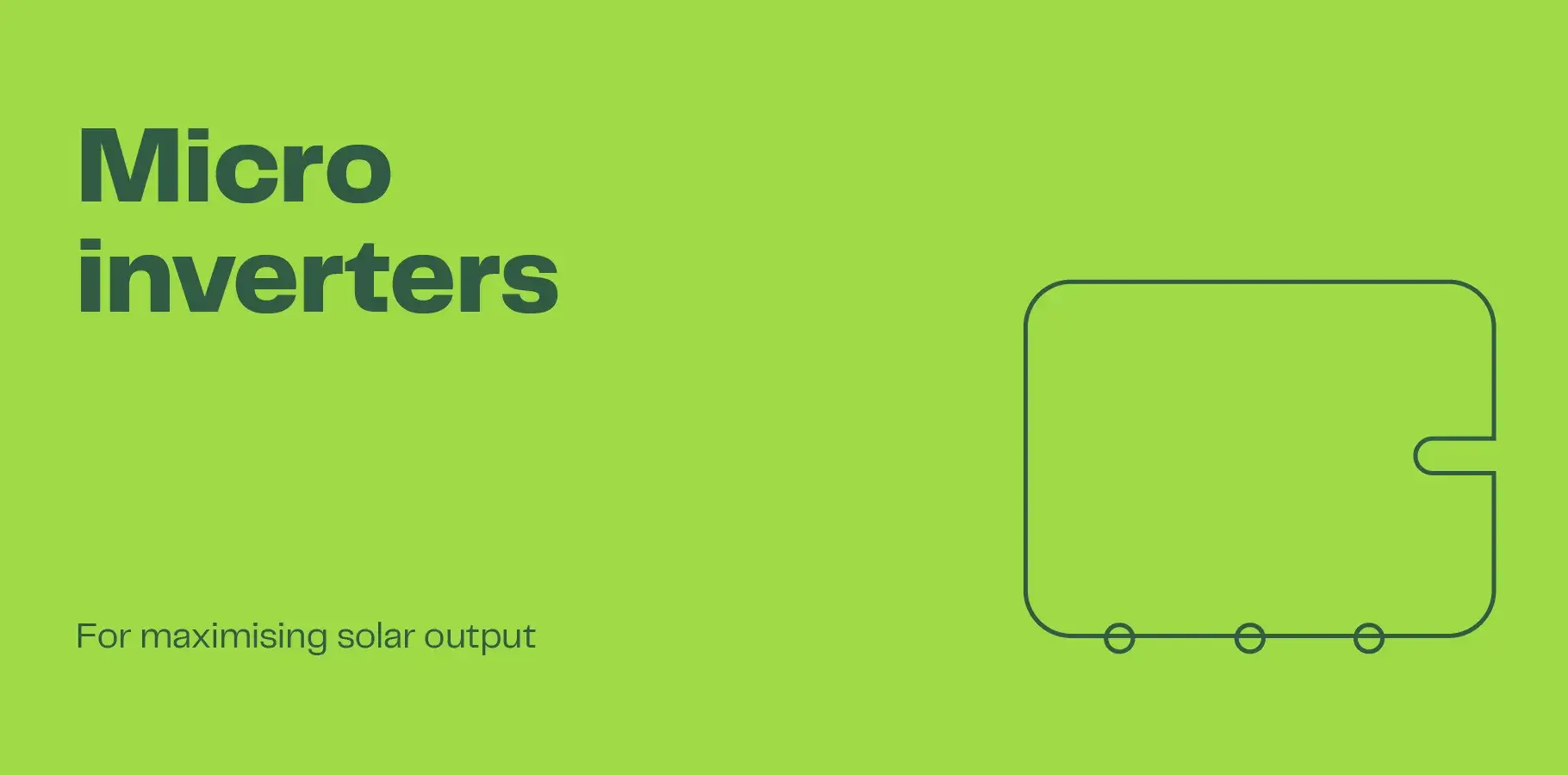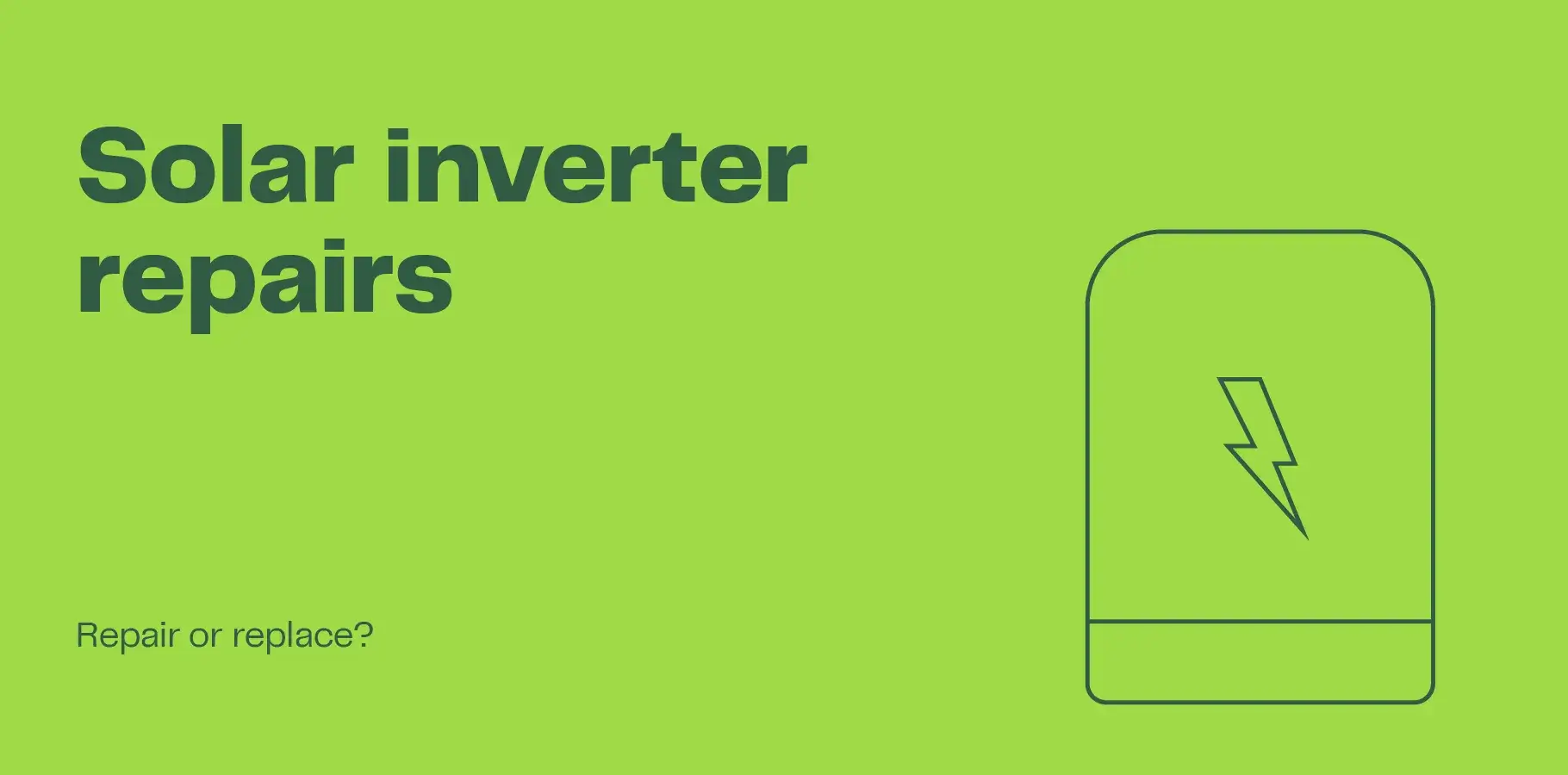A 3 phase solar inverter is a device that converts Direct Current (DC) electricity generated from solar panels to Alternate Current (AC) and distributes it across a three phase power supply.
3 phase solar inverters cost more
Typically, 3 phase inverters cost $300 – $500 more than a solar inverter of comparable quality. We list the best 3 phase inverters at the bottom of this article, you can jump straight to the list here.
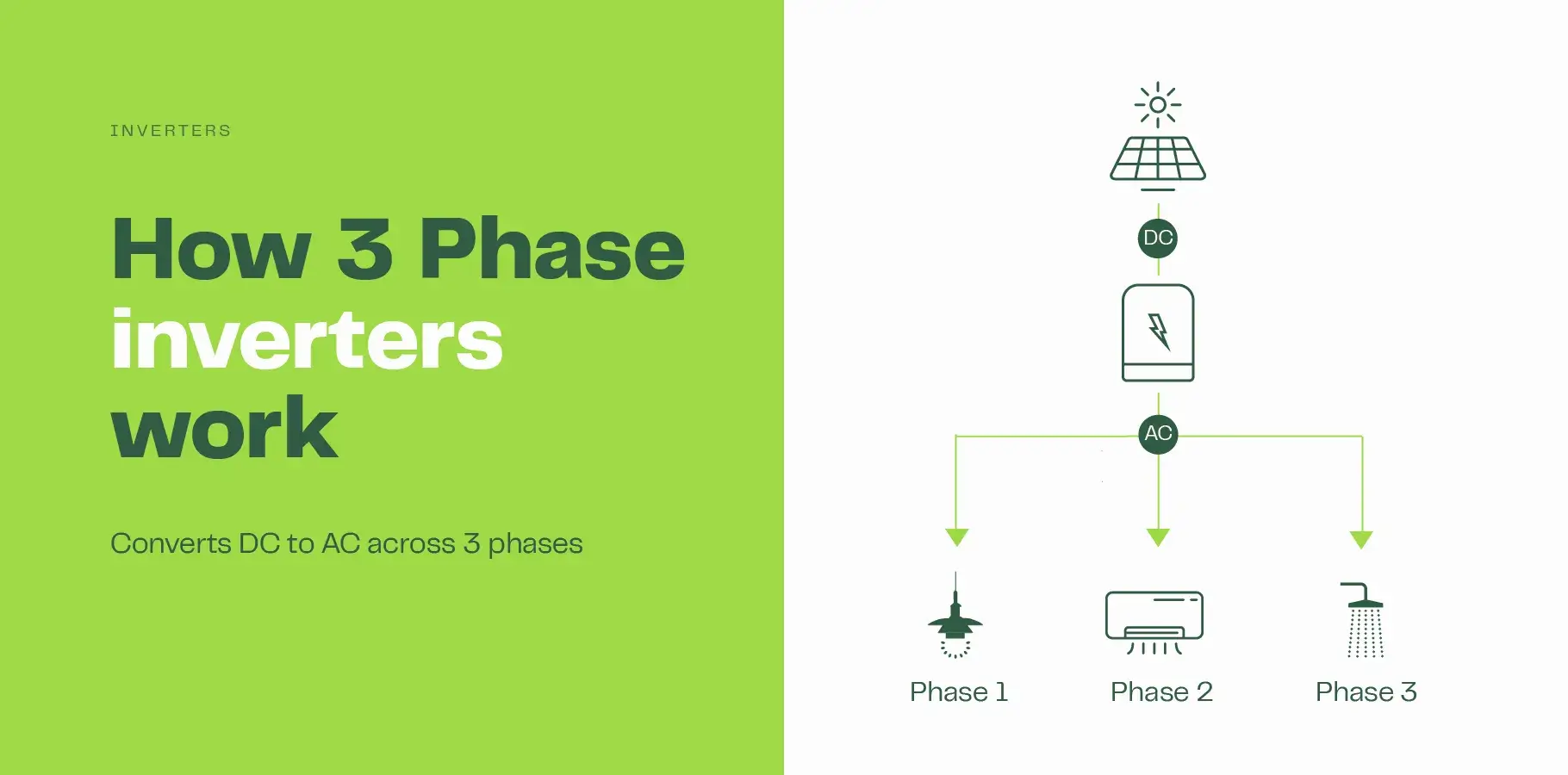
Do you need a 3 phase solar inverter?
If you do have 3 phase power, you don’t necessarily need a 3 phase inverter, a single phase inverter may do – though 3 phase inverters are typically recommended by electricians to reduce the risk of voltage rise. If you don’t have 3 phase power, then you don’t need a 3 phase inverter.
When weighing up a 3 phase inverter, consider these points:
- You don’t lose money with a single phase inverter
- A 3 phase inverter can reduce voltage risk
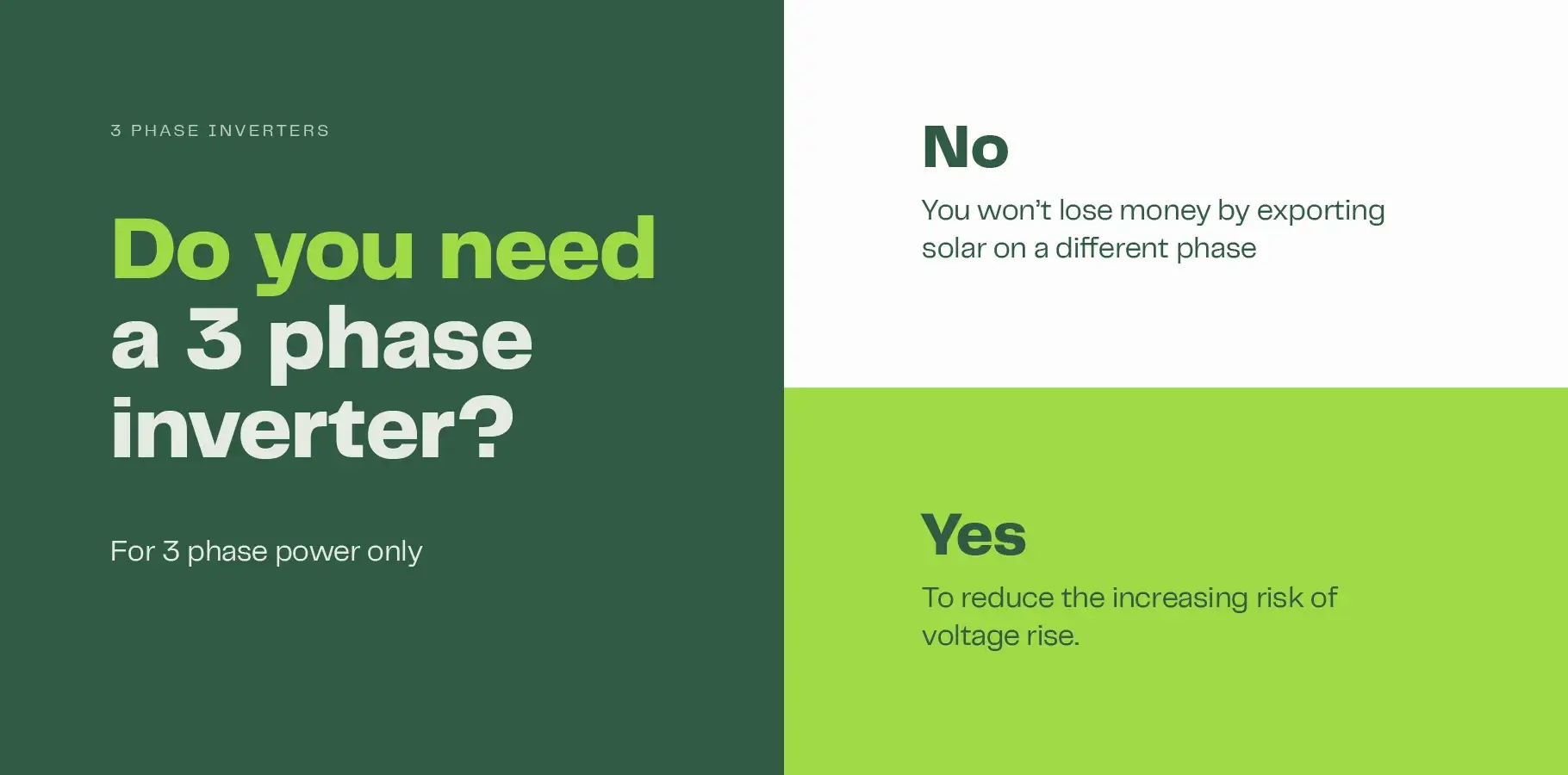
Net imports and exports with single phase inverters
Contrary to popular belief, you won’t be out of pocket if you use a single phase solar inverter with a 3 phase power supply. If you are consuming electricity on two different phases, and exporting all of your solar energy through your single phase inverter, your meter nets off the total imports and exports. The device that allows all this to happen is 3 phase digital meter, and it’s likely to be the Atlas EDMI polyphase meter.
Here’s how it works:
- Phase 1: Solar exported to the grid
- Phase 2: Large air-conditioner
- Phase 3: Instantaneous electric hot water
Let’s assume you are using a large air-conditioner and an instantaneous electric hot water system at the same time on different phases. On the other phase, you are exporting solar back to the grid via a single phase solar inverter.
Typically, you might receive a feed-in tariff of around 10c for the surplus solar energy, while you could expect to pay anywhere between 18 – 40c to buy electricity from the grid to power appliances. If you were receiving 10c while paying for 30c for electricity, you would be out-of-pocket.
Fortunately, the 3 phase meter nets off your imports and exports to the grid. So you can use a single phase inverter and self-consume the electricity you produce from solar panels – even if it is used on a different phase.
What is voltage rise
Voltage rise is the difference between the grid voltage and the higher inverter voltage. In Australia, typically grid voltage is somewhere between 216 – 253V, but normally around 230V. Inverters typically have a slightly higher voltage e.g. 235V, just high enough so that they can send the excess solar energy back to the grid.
What is the risk of voltage rise?
If there are many solar systems installed on your street, the voltage of the grid can rise during times of high production (e.g. midday) when excess solar is sent back to the grid. If the voltage of the grid keeps rising, your inverter must rise just above it. However, if the voltage of your inverter rises too high, it may switch off to protect itself. If the inverters switches off, your system switches off.
A 3 phase inverter can solve voltage rise issues
If you have 3 phase power, a 3 phase solar inverter reduces the risk of voltage rise by sending solar back to the grid via three cables and not one. For this reason, if you have 3 phase power, you’re better off paying a little bit extra for a 3 phase inverter.
If you have don’t have 3 phase power, increasing the cable size can reduce resistance and therefore lower the voltage.
List of 3 the best phase inverters

Many inverter manufacturers produce 3 phase inverters. The best brands are similar to those that produce the best inverters and are suitable for household and small commercial systems. Our list of the best 3 phase solar inverters:
- Fronius Symo – 3kW – 20kW
- SMA Sunny TriPower
- SolarEdge Three Phase inverter
- SunGrow 3 Phase Hybrid inverter
It is also possible to use Enphase micro inverters with a 3 phase supply, though they do not have purpose-built three phase inverters. However, their micro inverters can be configured for use with a 3 phase supply.
3 Phase hybrid solar inverters
The SunGrow 3 Phase Hybrid inverter is the best of the hybrid options available in Australia.
- SunGrow 3 Phase Hybrid inverter
